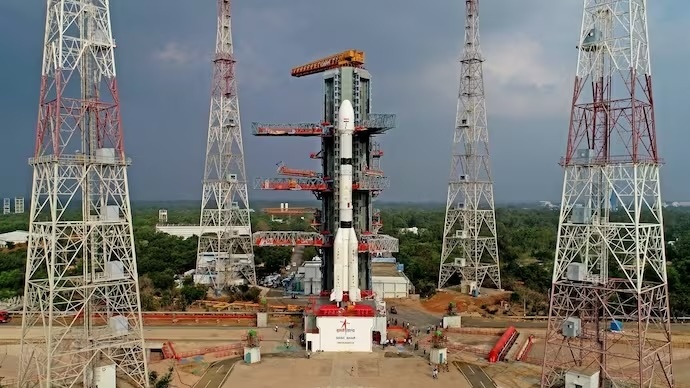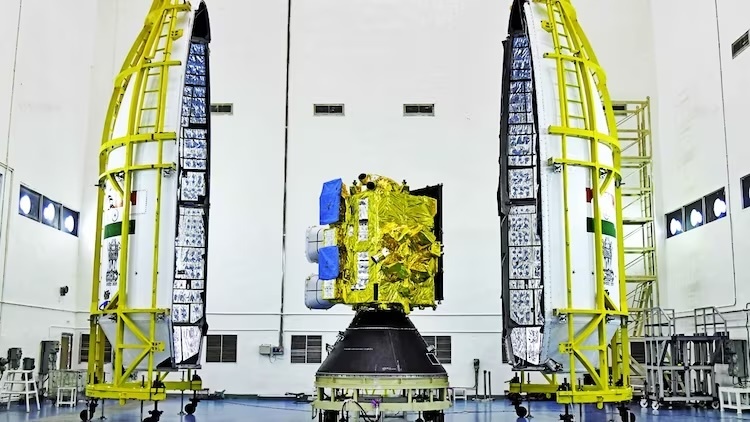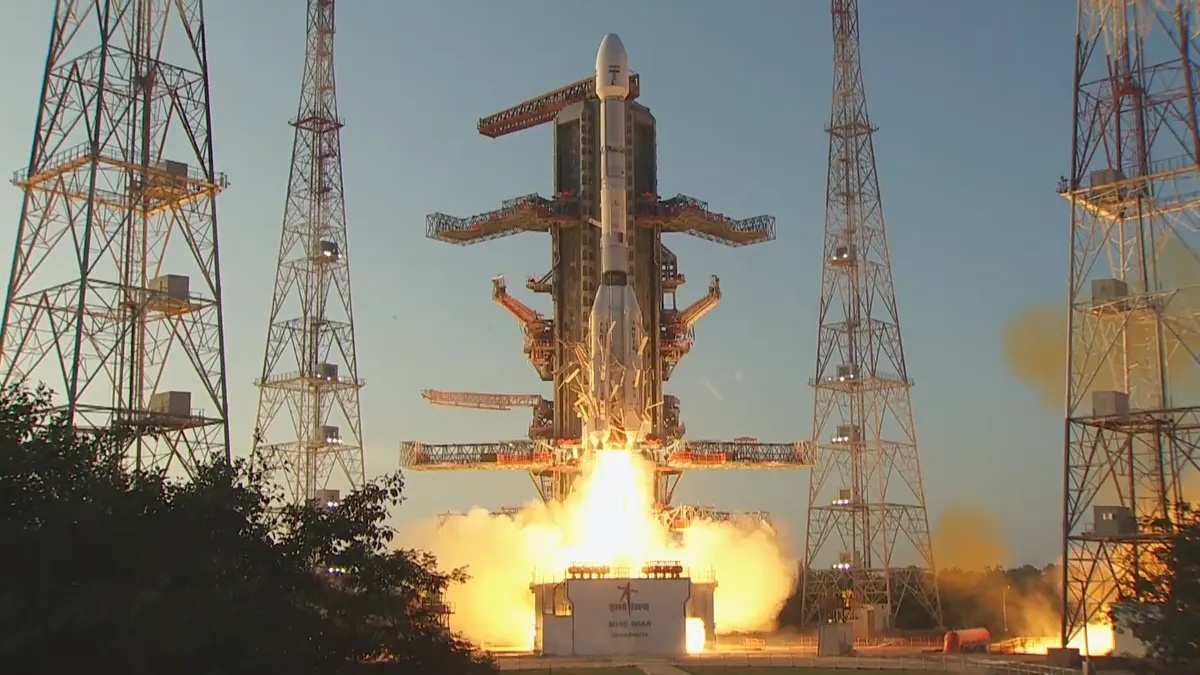29.01.2024
ISRO chairperson S Somanath has set forth an ambitious agenda for 2024, aiming for a minimum of 12 launches.

The Indian Space Research Organisation announced on Saturday that its meteorological satellite, INSAT-3DS, has been sent to Satish Dhawan Space Centre (SDSC) SHAR in Sriharikota for its upcoming launch aboard GSLV F14. INSAT-3DS, is an exclusive meteorological satellite realised by ISRO with the primary objective of providing continuity of services to the existing in-orbit INSAT-3D and 3DR satellites and significantly enhancing the capabilities of INSAT system is flagged off to SDSC-SHAR launch port on January 25, ISRO said in a statement.
INSAT-3DS is specifically designed to provide advanced meteorological observations, enabling improved weather forecasting capabilities.
• The satellite is equipped with cutting-edge payloads, including a 6-channel Imager and 19-channel Sounder for meteorological observations, ensuring high-quality data collection.
• INSAT-3DS features essential communication payloads, such as the Data Relay Transponder (DRT). This instrument receives data from automatic Data Collection Platforms and Automatic Weather Stations, enhancing weather forecasting capabilities.
• The SAS&R transponder is a crucial component incorporated into the satellite. It plays a vital role in relaying distress signals and alert detections from beacon transmitters, contributing to global search and rescue services.
• With its advanced payloads and communication features, INSAT-3DS is well-equipped to monitor land and ocean surfaces, providing valuable data for disaster warning systems and contributing to early-warning capabilities.
Earlier in the month, ISRO chairperson S Somanath set forth an ambitious agenda for 2024, aiming for a minimum of 12 launches. The space agency kicked off the new year by successfully launching the polarimetry mission, X-ray Polarimeter Satellite (XPoSat), on January 1.
Quelle: Hindustan Times
----
Update: 30.01.2024
.




Quelle: Deccan Herald
----
Update: 13.02.2024
.
How Isro plans to enhance ocean monitoring with INSAT-3DS mission
The INSAT-3DS is engineered to enhance meteorological observations and monitor land and ocean surfaces, thereby improving weather forecasting and disaster warning systems.

The Indian Space Research Organisation (ISRO) is gearing up for the scheduled launch of the INSAT-3DS satellite aboard the GSLV-F14 rocket.
This mission, fully funded by the Ministry of Earth Sciences (MoES), represents a critical step forward in India's meteorological capabilities.
Slated for liftoff on Saturday, February 17, 2024, at 17:30 IST from the Satish Dhawan Space Centre (SDSC-SHAR) in Sriharikota, the INSAT-3DS is the latest addition to India's third-generation meteorological satellites in geostationary orbit.
The upcoming launch will see the GSLV-F14 deploying the satellite into a Geosynchronous Transfer Orbit (GTO), with subsequent maneuvers designed to position it in a Geo-stationary Orbit.

WHAT WILL INSAT-3DS DO IN SPACE?
The INSAT-3DS is engineered to enhance meteorological observations and monitor land and ocean surfaces, thereby improving weather forecasting and disaster warning systems.
It will work in conjunction with the currently operational INSAT-3D and INSAT-3DR satellites, augmenting the meteorological services provided by these predecessors. The Indian industry has played a substantial role in the construction of this advanced satellite, showcasing the nation's growing self-reliance in space technology.
The satellite's primary objectives are multifaceted and crucial for environmental monitoring and safety. It is equipped to monitor Earth's surface and carry out oceanic observations in various spectral channels that are vital for meteorological analysis.

The INSAT-3DS ahead of encapsulation. (Photo: Isro)
Additionally, it will provide vertical profiles of atmospheric parameters such as temperature and humidity, which are essential for accurate weather predictions.
Data Collection Platforms (DCPs) will benefit from the satellite's data collection and dissemination capabilities, enhancing the reach and efficiency of information gathering. Moreover, the INSAT-3DS will offer Satellite Aided Search and Rescue services, contributing to emergency response efforts.
Various departments under the MoES umbrella, including the India Meteorology Department (IMD), National Centre for Medium-Range Weather Forecasting (NCMRWF), Indian Institute of Tropical Meteorology (IITM), National Institute of Ocean Technology (NIOT), and Indian National Center for Ocean Information Services (INCOIS), will utilise the data provided by INSAT-3DS.
These agencies and institutes anticipate that the satellite's advanced capabilities will lead to significantly improved weather forecasts and meteorological services.
Quelle: INDIA TODAY
----
Update: 17.02.2024
.

